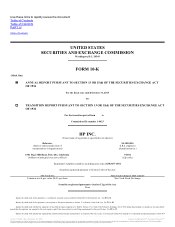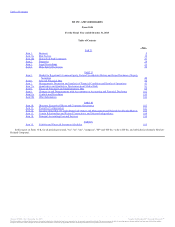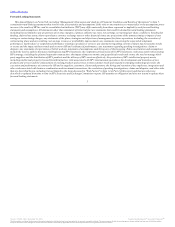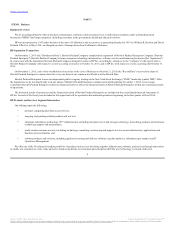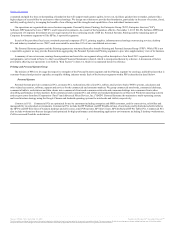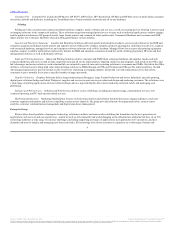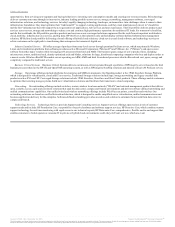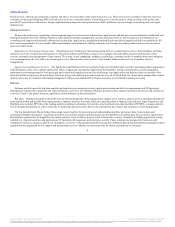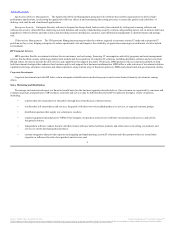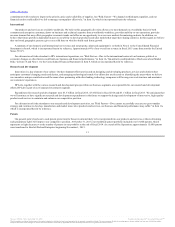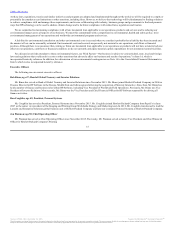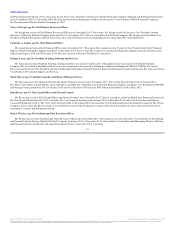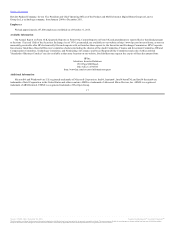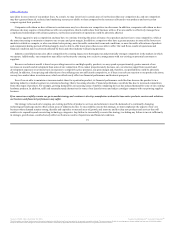HP 2015 Annual Report Download - page 12
Download and view the complete annual report
Please find page 12 of the 2015 HP annual report below. You can navigate through the pages in the report by either clicking on the pages listed below, or by using the keyword search tool below to find specific information within the annual report.
Table of Contents
•advisory firms that provide various levels of management and IT consulting, including some systems integration work, and typically partner
with us on client solutions that require our unique products and services.
The mix of our business conducted by direct sales or channel differs substantially by business and region. We believe that customer buying patterns and
different regional market conditions require us to tailor our sales, marketing and distribution efforts accordingly. We are focused on driving the depth and
breadth of our coverage, in addition to identifying efficiencies and productivity gains, in both our direct and indirect businesses. While each of our business
segments manages the execution of its own go-to-market and distribution strategy, our business segments also collaborate to ensure strategic and process
alignment where appropriate. For example, we typically assign an account manager to manage relationships across our business with large enterprise
customers. The account manager is supported by a team of specialists with product and services expertise. For other customers and for consumers, PPS
typically manages direct online sales as well as channel relationships with retailers, while our business segments collaborate to manage relationships with
commercial resellers targeting SMBs where appropriate.
We utilize a significant number of outsourced manufacturers ("OMs") around the world to manufacture HP-designed products. The use of OMs is
intended to generate cost efficiencies and reduce time to market for HP-designed products. We use multiple OMs to maintain flexibility in our supply chain
and manufacturing processes. In some circumstances, third-party OEMs produce products that we purchase and resell under the HP brand. In addition to our
use of OMs, we currently manufacture a limited number of finished products from components and subassemblies that we acquire from a wide range of
vendors.
We utilize two primary methods of fulfilling demand for products: building products to order and configuring products to order. We build products to
order to maximize manufacturing and logistics efficiencies by producing high volumes of basic product configurations. Alternatively, configuring products
to order enables units to match a customer's particular hardware and software customization requirements. Our inventory management and distribution
practices in both building products to order and configuring products to order seek to minimize inventory holding periods by taking delivery of the
inventory and manufacturing shortly before the sale or distribution of products to our customers.
We purchase materials, supplies and product subassemblies from a substantial number of vendors. For most of our products, we have existing alternate
sources of supply or such alternate sources of supply are readily available. However, we do rely on sole sources for laser printer engines, LaserJet supplies,
certain customized parts and parts for products with short life cycles (although some of these sources have operations in multiple locations in the event of a
disruption). We are dependent upon Intel and AMD as suppliers of x86 processors and Microsoft for various software products; however, we believe that
disruptions with these suppliers would result in industry-wide dislocations and therefore would not disproportionately disadvantage us relative to our
competitors. See "Risk Factors—We depend on third-party suppliers, and our financial results could suffer if we fail to manage our suppliers effectively," in
Item 1A, which is incorporated herein by reference.
Like other participants in the IT industry, we ordinarily acquire materials and components through a combination of blanket and scheduled purchase
orders to support our demand requirements for periods averaging 90 to 120 days. From time to time, we may experience significant price volatility or supply
constraints for certain components that are not available from multiple sources. Frequently, we are able to obtain scarce components for somewhat higher
prices on the open market, which may have an impact on our gross margin but does not generally disrupt production. We also may acquire component
inventory in anticipation of supply constraints or enter into longer-term pricing
10
Source: HP INC, 10-K, December 16, 2015 Powered by Morningstar® Document Research℠
The information contained herein may not be copied, adapted or distributed and is not warranted to be accurate, complete or timely. The user assumes all risks for any damages or losses arising from any use of this information,
except to the extent such damages or losses cannot be limited or excluded by applicable law. Past financial performance is no guarantee of future results.


